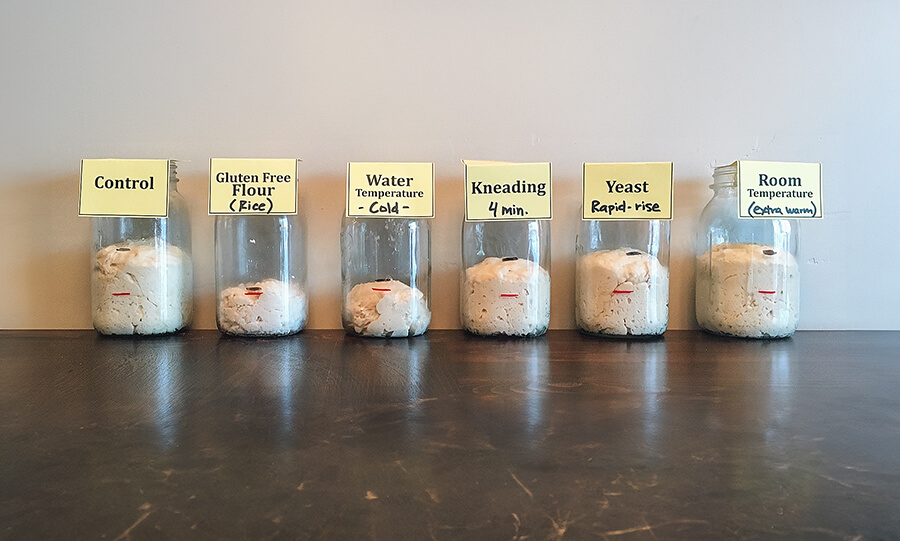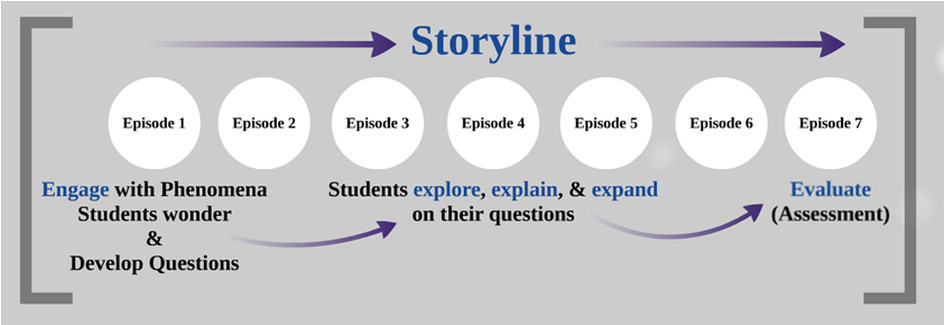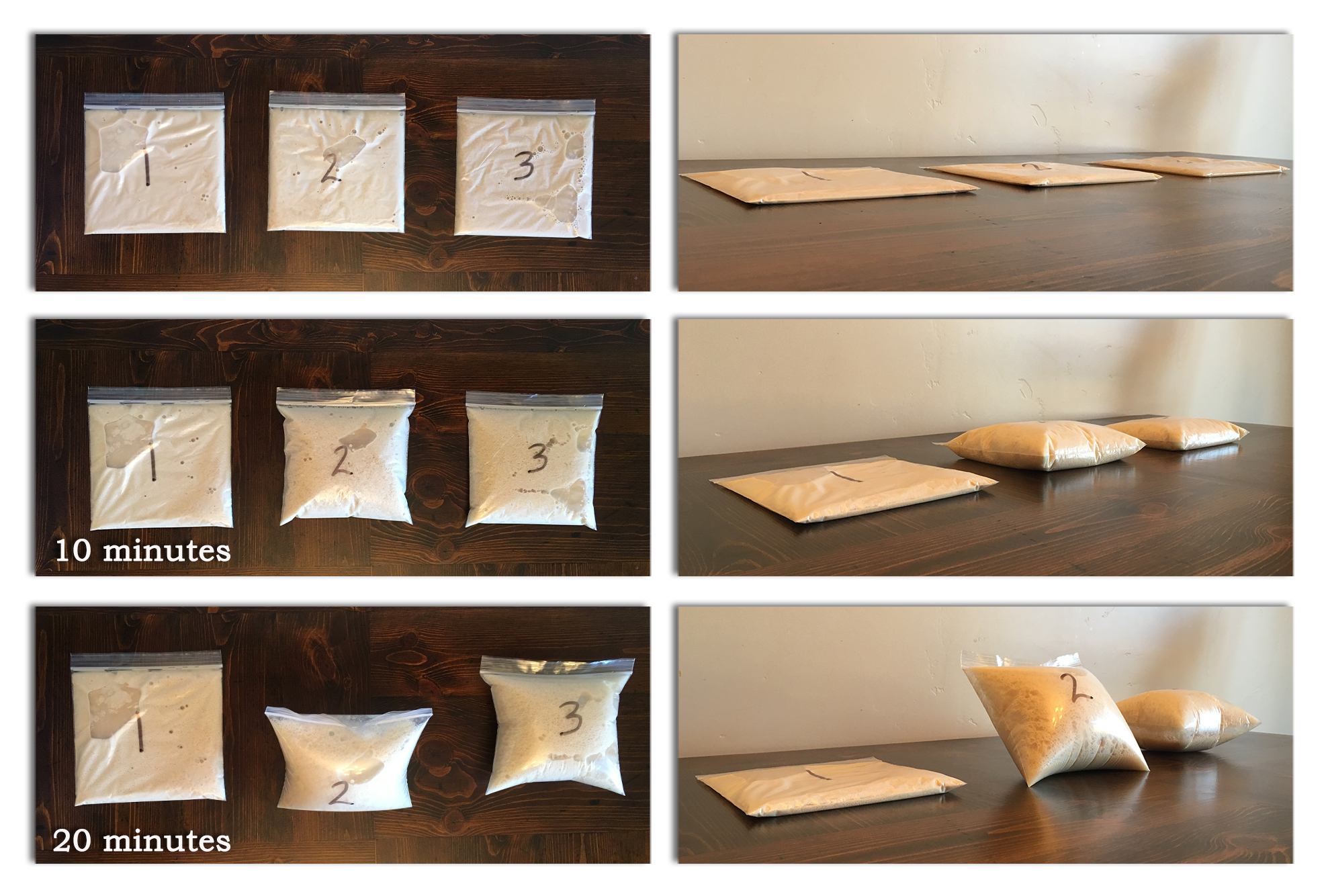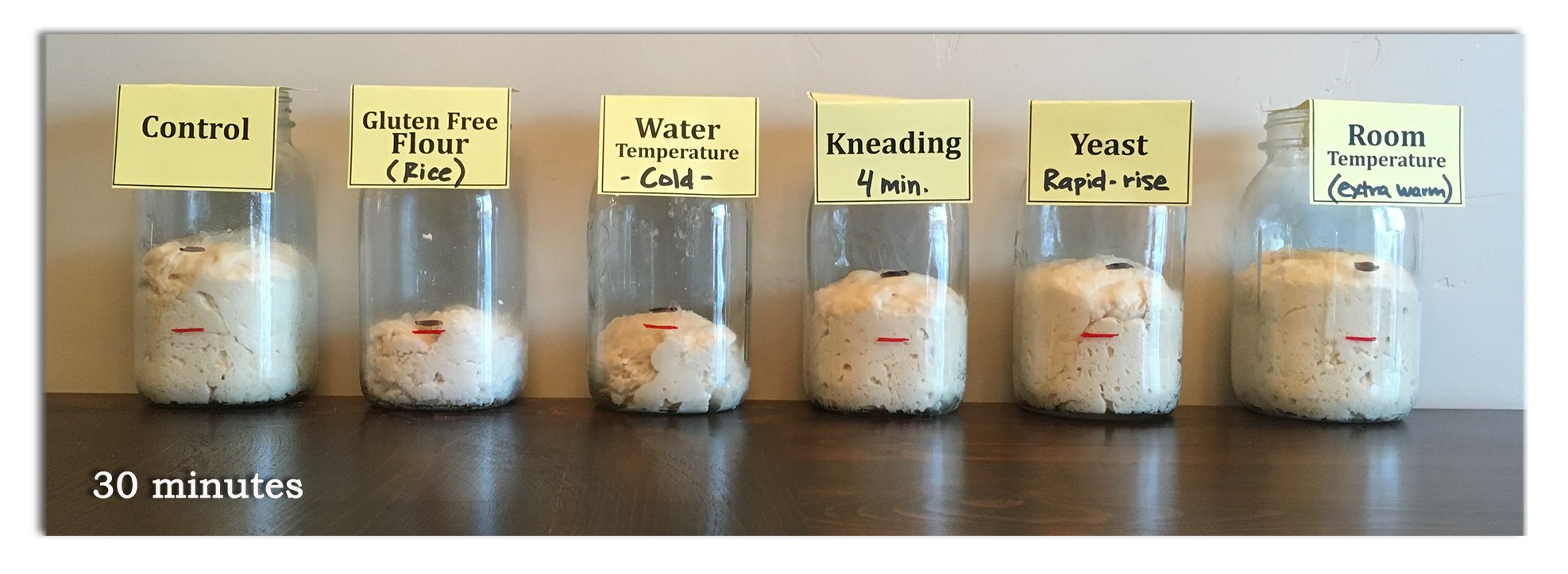Food Science: Bread Dough Challenge
Students explore the phenomenon of what makes bread dough rise. Using baker's yeast, students will observe alcoholic fermentation and its connection to cellular respiration as they are challenged to act as food scientists and develop the best recipe for quick-rising bread dough.

Background
Lesson Activities
Recommended Companion Resources
Credits
Author
Ann Butkowski and Andrea Gardner | Minnesota Agriculture in the Classroom and National Center for Agricultural Literacy (NCAL)
Acknowledgements
This lesson was originally written by Ann Butkowski for Minnesota Agriculture in the Classroom. It was updated and revised in 2019 by the National Center for Agricultural Literacy.
Phenomenon chart adapted from work by Susan German.
German, S. (2017, December). Creating conceptual storylines. Science Scope, 41(4), 26-28.
German, S. (2018, January). The steps of a conceptual storyline. Science Scope, 41(5), 32-34.
Sources
- https://mobile-cuisine.com/did-you-know/bread-fun-facts/
- https://wiki.kidzsearch.com/wiki/Yeast
- http://www.ilove2bake.co.za/learn-more-about-yeast-6-8-interesting-facts/
- https://redstaryeast.com/science-yeast/what-is-yeast/
Standards
Indiana Content Area Standards
-
English Language Arts.Grade 9-10.W.1
Write routinely over a variety of time frames for a range of tasks, purposes, and audiences; apply reading standards to support analysis, reflection, and research by drawing evidence from literature and nonfiction texts.
- The Research Process: Finding, Assessing, Synthesizing, and Reporting Information.9-10.W.5: Conduct short as well as more sustained research assignments and tasks to build knowledge about the research process and the topic under study. a. b. c. d. e. f. Formulate an inquiry question, and refine and narrow the focus as research evolves. Gather relevant information from multiple authoritative sources, using advanced searches effectively, and annotate sources. Assess the usefulness of each source in answering the research question. Synthesize and integrate information into the text selectively to maintain the flow of ideas. Avoid plagiarism and over reliance on any one source and follow a standard format (e.g.,MLA, APA) for citation. Present information, choosing from a variety of formats
-
English Language Arts.Grade 9-10.SL.1
Listen actively and adjust the use of spoken language (e.g., conventions, style, vocabulary) to communicate effectively with a variety of audiences and for different purposes.
- Discussion and Collaboration.9-10.SL.2.1: Initiate and participate effectively in a range of collaborative discussions on grade-appropriate topics, texts, and issues, building on others ideas and expressing personal ideas clearly and persuasively.
-
English Language Arts.Grade 11-12.W.1
Write routinely over a variety of time frames for a range of tasks, purposes, and audiences; apply reading standards to support analysis, reflection, and research by drawing evidence from literature and nonfiction texts.
- The Research Process: Finding, Assessing, Synthesizing, and Reporting Information.11-12.W.5: b. Gather relevant information from multiple types of authoritative sources, using advanced searches effectively, and annotate sources. c. Assess the strengths and limitations of each source in terms of the task, purpose,and audience. d. Synthesize and integrate information into the text selectively to maintain the flow of ideas. e. Avoid plagiarism and over reliance on any one source and follow a standard format (e.g., MLA, APA) for citation. f. Present information, choosing from a variety of formats.
-
English Language Arts.Grade 11-12.SL.1
Listen actively and adjust the use of spoken language (e.g., conventions, style, vocabulary) to communicate effectively with a variety of audiences and for different purposes.
- Discussion and Collaboration.11-12.SL.2.1: Initiate and engage in a range of collaborative discussions on grade-appropriate topics, texts, and issues, building on others ideas and expressing personal ideas clearly and persuasively.


